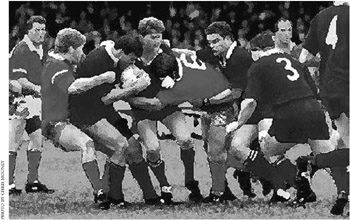Painting
Creating images by applying color to a surface is one of the most basic forms of artistic expression; indeed, the history of the world can be viewed in the legacy of paintings that have been left behind by our talented predecessors. Throughout history, the technical and aesthetic qualities of painting have changed, various styles have emerged, and pictorial content has evolved.
Representational painting dominated the world for centuries. Paintings contained content that could be easily recognized, whether the subject matter was religious, historical, or descriptive. Then in the late nineteenth century, artists began to abstract the tangible realities that they observed to produce art filtered through their personal experiences. Within 50 years , abstraction led to the creation of a totally nonobjective idiom in styles such as the Abstract Expressionism of the 1950s and the Minimalism of the 1960s.
Still, the tradition of representation coexisted with abstract painterly forms, but it was reinvented time and again as it reflected the zeitgeist in which it was created. Pop Art of the 1960s, for example, introduced us to the idea that the objects and icons of popular culture could be assimilated and even elevated into the realm of pure art. This concept was revolutionary because it changed the way we viewed the commonplace.
Though the imagery has changed, the painter s tools have remained pretty much the same over the centuries. Paint, palette, knife , brushes, solvent, paper, canvas, panel, and easel have been around for quite some time, having seen few refinements throughout history. (Even the airbrush evolved from an air-driven breath atomizer that has been in use since the eighteenth century.) The concept remains the same: mix colors on the palette, adding solvent if desired, and apply them to the painting surface with a brush or knife. Only recently have methods of applying color to a surface been substantially transformed.
Photoshop is a virtual art studio. Through Photoshop s graphical user interface, you can apply color to an image as if you were painting. Instead of pigment, however, you are mixing colors and painting with light. Photoshop has numerous tools, operations, and filters that enable you to make a photographic image appear as if it had been painted in virtually any style and with any paint medium (see Figure 1.3; for a full-color reproduction of this image, see Figure C1 in the color section). You have 16,777,216 colors to choose from and brushes of almost any size or shape with which to apply the color.

Figure 1.3: A photograph altered to look like apainting by using Photoshop s brushes and filters
EAN: 2147483647
Pages: 355